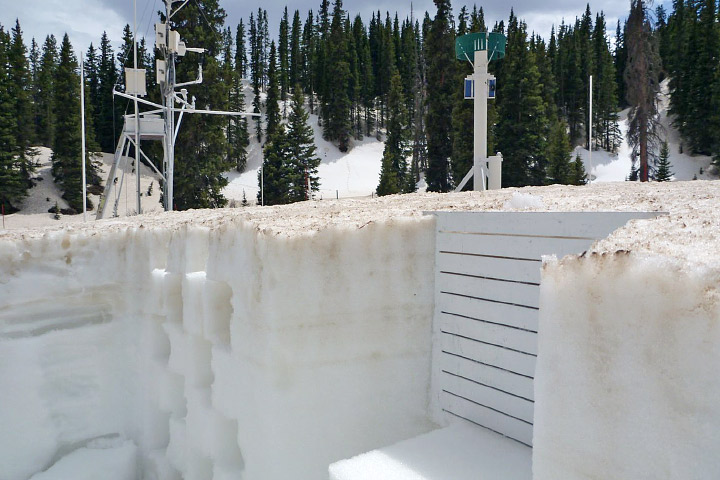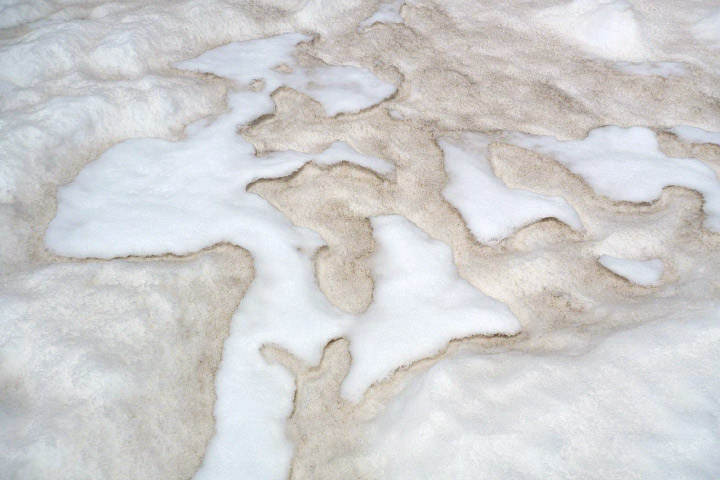

Dust reduces snow’s albedo—how much light it reflects back into space—causing a cascade of effects. “The enhanced absorption puts more heat into the water molecules in the snow,” Painter explains. Snow grains start to cluster together into bigger grains, and those grains have a larger surface area and volume for absorbing sunlight. Energy can penetrate deeper into the snowpack, and it has a longer and more torturous pathway to get back out.

The effects quickly spread beyond one patch of snow. “By shortening the life of snow cover, you expose the soil and vegetation sooner,” Painter explains. Since soil and vegetation are darker than snow, they absorb more sunlight and reinforce the warming, melting, and evaporation. The exposed vegetation also starts growing sooner, making use of the liquid water and transpiring or “breathing” it back into the atmosphere.
In a study published in 2010, Painter and colleagues estimated that nearly 35 billion cubic feet of water were lost each year from the Colorado River basin through extended transpiration and evaporation. That’s enough water to supply Los Angeles for 18 months.
Snow cover is also important to glacier mass balance—the difference between how much snow and ice accumulates and how much melts. Pure, fresh snow isn’t just whiter and better at reflecting sunlight than water or dirt. Snow is whiter than ice, so it acts as a reflector and insulator on top of glaciers. More than 80 to 90 percent of the sunlight falling on fresh snow is reflected back into space, compared to 15 to 35 percent of the sunlight reflected by most ice.

Once dust helps snow begin melting the reflectivity drops further, speeding the rate of melting. (Photograph ©2013 Jeff Deems, NSIDC.)
“You have this very bright surface, much brighter than the glacier itself, and snow does not conduct heat well,” he says. “You can have a moist, high-temperature air mass flowing across the surface of a glacier, but because snow is such a great insulator, the ice has no idea whether it’s hot, cold, moist, or dry up there.”
“Increasing the dust load peels that insulation back earlier in the year,” Painter adds. “Once you peel the snow cover back, the energy can go into the glacier and start melting.”
The accumulated result is that the amount of water flowing into rivers, streams, and lakes decreases and becomes less predictable. The melt water that does run into the valleys and streams tends to flow faster and earlier in the spring (as much as three weeks earlier). Also, less snow is stored in the mountains for melting later in the summer and fall, when residual snowmelt can sustain water supplies through rain-starved times. “The compressed mountain runoff period makes water management more difficult than a slower runoff.”